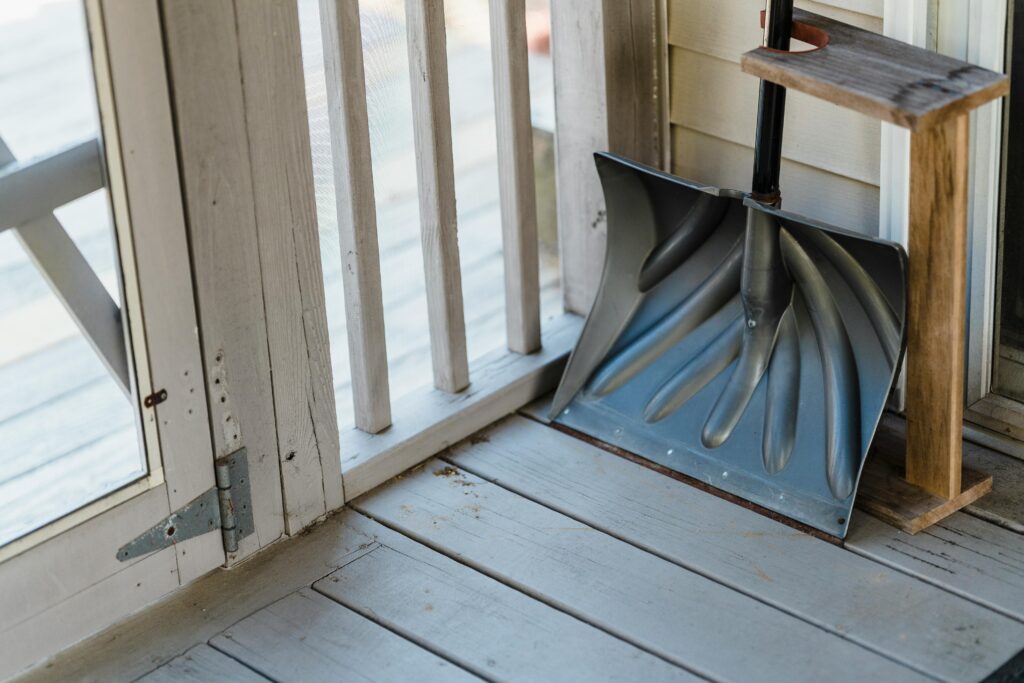
Imagine waking up to a serene winter morning, the world outside blanketed in pristine snow. Your garden, once alive with vibrant greens and colorful blooms, now lies quietly under a thick layer of snow and ice. While this picturesque scene might seem magical, it also brings challenges: slippery paths, blocked access to crucial areas, and potential damage to plants and structures. If you’ve ever wondered how to maintain a snowed garden safely and keep your property accessible all winter, you’re not alone.
Managing snow and ice in your garden isn’t just about aesthetics, it’s a matter of safety and practicality. Whether you live in a region prone to heavy snowfall or experience occasional winter storms, effective snow and ice removal is critical. Neglecting it can lead to hazardous walkways, damage to your driveway, and even harm to your landscape. In this article, we’ll explore proven techniques and tips for snow and ice removal that ensure your snowed garden remains both beautiful and safe throughout the cold months.
You’ll learn how to assess which areas of your property need immediate attention and discover the best tools and materials to use for effective snow clearing. We’ll discuss environmentally friendly methods to manage ice without harming your plants or soil, and offer advice on protecting delicate garden features from winter’s harsh effects. Moreover, you’ll find insights into preventive strategies that can minimize ice buildup, making your winter maintenance routine easier and more efficient.
By applying the strategies in this guide, you can confidently navigate the challenges of a snowed garden and make sure that your property stays accessible and secure no matter how deep the snow piles up. Say goodbye to slipping hazards and hello to a well-maintained winter landscape that you can enjoy safely. Let’s dive into the essential tips and tricks for mastering snow and ice removal, transforming your garden into a safe haven all winter long.
Why Snowed Garden Is More Important Than You Think for Winter Safety and Accessibility
When winter descends, blanketing landscapes in snow and ice, maintaining safety and accessibility around your property becomes a critical challenge. This is where Snowed Garden, a specialized approach to snow and ice removal, steps in as an indispensable solution for homeowners, businesses, and community spaces alike. But what exactly is Snowed Garden, and why does it deserve your attention?
At its core, Snowed Garden refers to the comprehensive management of snow and ice in outdoor garden spaces and surrounding property areas, ensuring that pathways, driveways, and entry points remain safe and usable throughout the winter months. Unlike basic snow shoveling, Snowed Garden involves using professional-grade techniques and tools to effectively clear snow, treat icy patches, and protect plants and hardscapes from winter damage, all while keeping your property aesthetically pleasing.
Why is this so important? According to the National Safety Council, slips, trips, and falls account for over 1 million emergency department visits every year in the United States alone, many of which increase dramatically during snowy and icy conditions. For property owners, this translates into a significant risk, not only of injury to residents and visitors but also potential legal liabilities. Moreover, inaccessible walkways can hinder daily routines, from getting children to school to customers accessing storefronts, directly impacting quality of life and business operations.
To put the value of Snowed Garden into perspective, consider the story of Maplewood Community Center, a neighborhood hub nestled in a region prone to heavy snowfall. In previous winters, severe ice buildup frequently closed the center, frustrating locals and disrupting programs. After adopting a Snowed Garden strategy, including proactive ice melting treatments and snow clearing scheduled by weather forecasts, the center maintained safe access all winter long. Attendance soared, community satisfaction improved, and costly injury claims dropped to zero.
Statistics also back this up: Property owners who implement systematic snow and ice removal plans, akin to Snowed Garden methods, report a 40% reduction in slip-and-fall incidents during winter. Furthermore, preserving garden health amid snow removal processes protects landscaping investments, which could otherwise suffer costly damage from harsh winter conditions.
In summary, Snowed Garden is much more than a simple cleanup task, it’s a vital practice for ensuring safety, accessibility, and property preservation through the winter months. Embracing it means not just surviving winter, but thriving in it, with peace of mind and a welcoming exterior no matter the weather.
Tips for Effective Snow and Ice Removal with Snowed Garden ❄️🌿
✅ Plan Ahead: Create a snow removal schedule to keep your property consistently clear and prevent dangerous buildup.
🛠 Use the Right Tools: Equip yourself with a durable shovel, ice scraper, and eco-friendly ice melt to tackle different types of snow and ice.
🌬 Clear Early and Often: Start removing snow as soon as it begins to fall to avoid heavy accumulation and hardened ice patches.
♂️ Prioritize Pathways: Focus on walkways, driveways, and entrances first to maintain safe access for residents and visitors.
♻️ Choose Environmentally Safe Products: Select ice melt that won’t harm your garden plants or grass, preserving your landscape’s health.
🧤 Dress Appropriately: Wear warm, waterproof clothing and slip-resistant boots to stay comfortable and avoid accidents during removal.
🔥 Warm Up Before Starting: Stretch and warm up your muscles to reduce the risk of injury while shoveling heavy snow.
💡 Extra Tip: Use Snowed Garden’s smart alerts or app features (if available) for real-time weather updates and removal reminders to stay ahead of winter’s challenges.
Keeping your property safe and accessible throughout winter is easier with these practical Snowed Garden tips!

Key Concepts
When we talk about “Snowed Garden” within the frame of snow and ice removal keeping your property safe and accessible all winter, we are diving into a fascinating intersection where nature’s beauty meets the gritty reality of winter maintenance. Imagine your garden as a delicate sculpture, meticulously designed and cared for during the warm months, only to be cloaked suddenly by a heavy, silent snowfall, a “Snowed Garden.” This image not only conjures a serene winter landscape but also prompts the crucial question: how do we balance aesthetics and safety during the season of ice and snow?
The Dual Nature of a Snowed Garden
A garden blanketed in snow transforms from its usual riot of colors and textures into a monochrome, almost magical tableau. This transformation, much like a painting covered in a veil, conceals both beauty and vulnerability. On one hand, snow acts as a natural insulator, protecting plant roots from harsh freezing temperatures, much like a warm blanket shields a child on a cold night. This protective layer is crucial for the survival of many plant species. However, this serene image can mask potential dangers, not only for the flora but for anyone navigating the property.
The snow and ice accumulation can create slippery, hazardous surfaces around pathways, stairs, and entryways. Herein lies the paradox of the snowed garden: while it is a natural shield to vegetation, it simultaneously threatens human safety and property integrity.
Snow and Ice: Opposing Forces in Winter Garden Management
Snow gently falls, accumulating softly around bushes and flower beds, but ice is its colder, more treacherous counterpart. Ice forms a rigid, glass-like sheet over surfaces, almost like a hidden trap. If snow is the gentle winter artist painting your garden white, ice is the silent saboteur threatening balance and safety. Ice buildup can damage plants by breaking fragile branches under its weight and harming roots through prolonged cold exposure. For pathways and driveways, ice is a formidable adversary, increasing the risk of slips and falls dramatically.
Understanding this duality is fundamental when contemplating the concept of a “Snowed Garden.” It serves as a reminder that winter’s beauty requires respect and careful consideration.
The Garden as a Winter Ecosystem
Viewing the garden as a living ecosystem during winter shifts our perspective from merely an aesthetic spot to a dynamic environment influenced by snow and ice. The snow acts like a winter punctuation mark, a pause in growth but not a cessation of life. Beneath the snowy cover, microhabitats develop where insects, small mammals, and microorganisms thrive in surprising ways; some seeds germinate later during spring, nurtured by the moisture snow provides.
Imagining a snowed garden as an intricate web of interactions deepens our appreciation for its resilience and the natural cycle of seasons.
The Psychological Impact of a Snowed Garden
Beyond physical considerations, a snow-covered garden holds a symbolic and emotional place for many. It represents quietude, introspection, and sometimes, isolation, the hushed stillness that snow brings mimics a blanket muffling the usual noises of life. This can evoke feelings of calm or melancholy, contrasting with the vibrant energy of other seasons. Contemplating the “Snowed Garden” metaphorically, it mirrors moments in our lives when things seem frozen in time, waiting for a thaw to bloom again.
This emotive layer adds complexity to the concept, intertwining nature’s rhythms with human experience.
Accessibility and Safety: The Human Factor in a Snowed Garden
The primary concern under the umbrella of snow and ice removal is safety and accessibility. A snowed garden, while visually enchanting, can become a labyrinth of dangers without appropriate attention. Ice-coated steps and hidden patches of black ice can turn familiar paths into uncertain terrain. The concept extends beyond mere snow clearing, it involves understanding how the terrain interacts with elements and human activity.
Metaphorically, think of it as maintaining open communication lines in a community, when pathways are blocked or hazardous, the flow of people and activity grinds to a halt, much like how snow and ice can halt movement. Hence, the “Snowed Garden” becomes a delicate balance zone where nature’s whimsy must meet human pragmatism.
The Visual and Textural Contrast of a Snowed Garden
A snowed garden is a masterclass in contrasts: soft snow against rough bark, crystalline ice against muted soil, stark white expanses juxtaposed with occasional evergreens or bare branches. This interplay heightens sensory awareness and offers a new way to experience familiar spaces. Snow muffles sound, softens edges, and transforms ordinary garden structures into surreal shapes.
This visual geometry caused by snow and ice brings a poetic dimension to winter property management. It shows how impermanence and transformation are inherent to both nature and the human constructed environment.
In conclusion, the concept of a “Snowed Garden” within the context of snow and ice removal is rich and multifaceted. It embraces the beauty and fragility of a landscape transformed, the ecosystem underneath, the emotional and psychological layers, and the critical need for safety and accessibility. It is a metaphor for the balance between nature’s generosity and winter’s challenges, an ongoing dance that defines the essence of managing properties through the colder months.
Frequently Asked Questions about Snowed Garden
❓ What is Snowed Garden?
Snowed Garden is a comprehensive snow and ice removal service designed to keep your property safe and accessible throughout the winter months. It focuses on efficient clearing of snow from driveways, walkways, and gardens to prevent accidents and maintain usability.
❓ Why is snow and ice removal important for my garden?
Removing snow and ice from your garden and surrounding areas helps prevent damage to plants and hardscaping features. It also reduces the risk of slips and falls, ensuring safety for you and your visitors during icy conditions.
❓ How often should I clear snow in my garden area?
For optimal safety, it’s best to remove snow and ice as soon as possible after a snowfall. Frequent clearing prevents ice buildup and maintains accessibility. During heavy snow periods, daily removal may be necessary.
❓ Can Snowed Garden services prevent ice accumulation, or do they only remove snow?
Snowed Garden services not only remove snow but also apply treatments such as salt or environmentally friendly ice melt products to reduce ice formation. This dual approach helps keep your property safer and easier to navigate.
❓ Is Snowed Garden suitable for residential and commercial properties?
Yes, Snowed Garden caters to both residential homes and commercial properties. The service scales to your needs, whether it’s a small garden pathway or a large parking lot, ensuring winter accessibility and safety for all types of properties.
